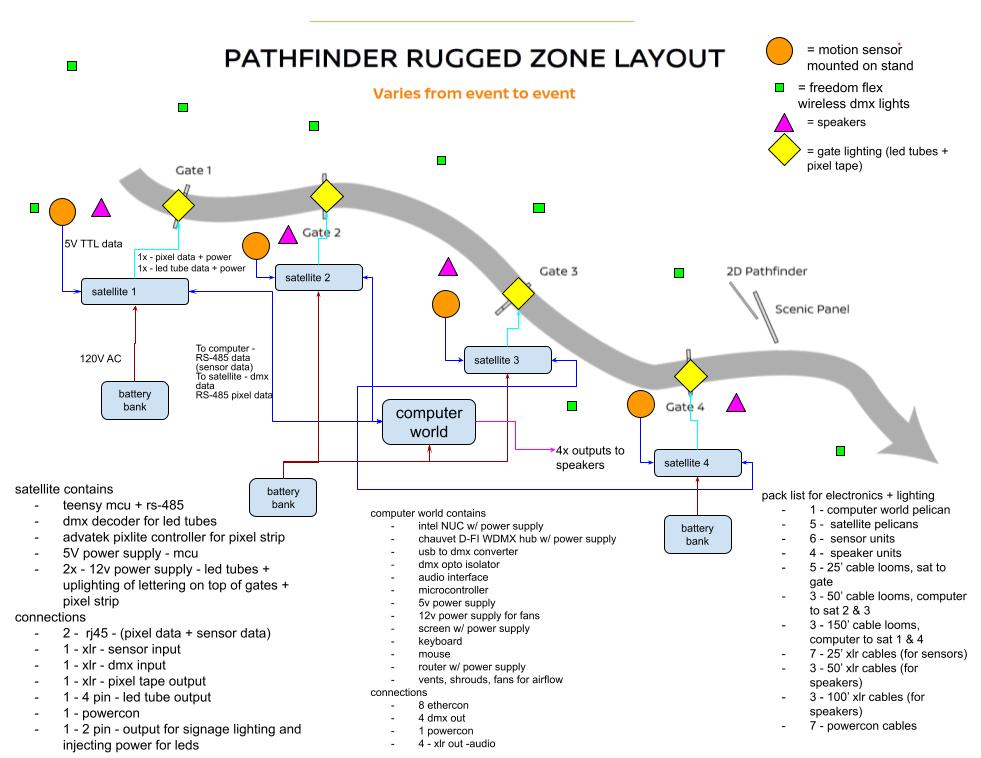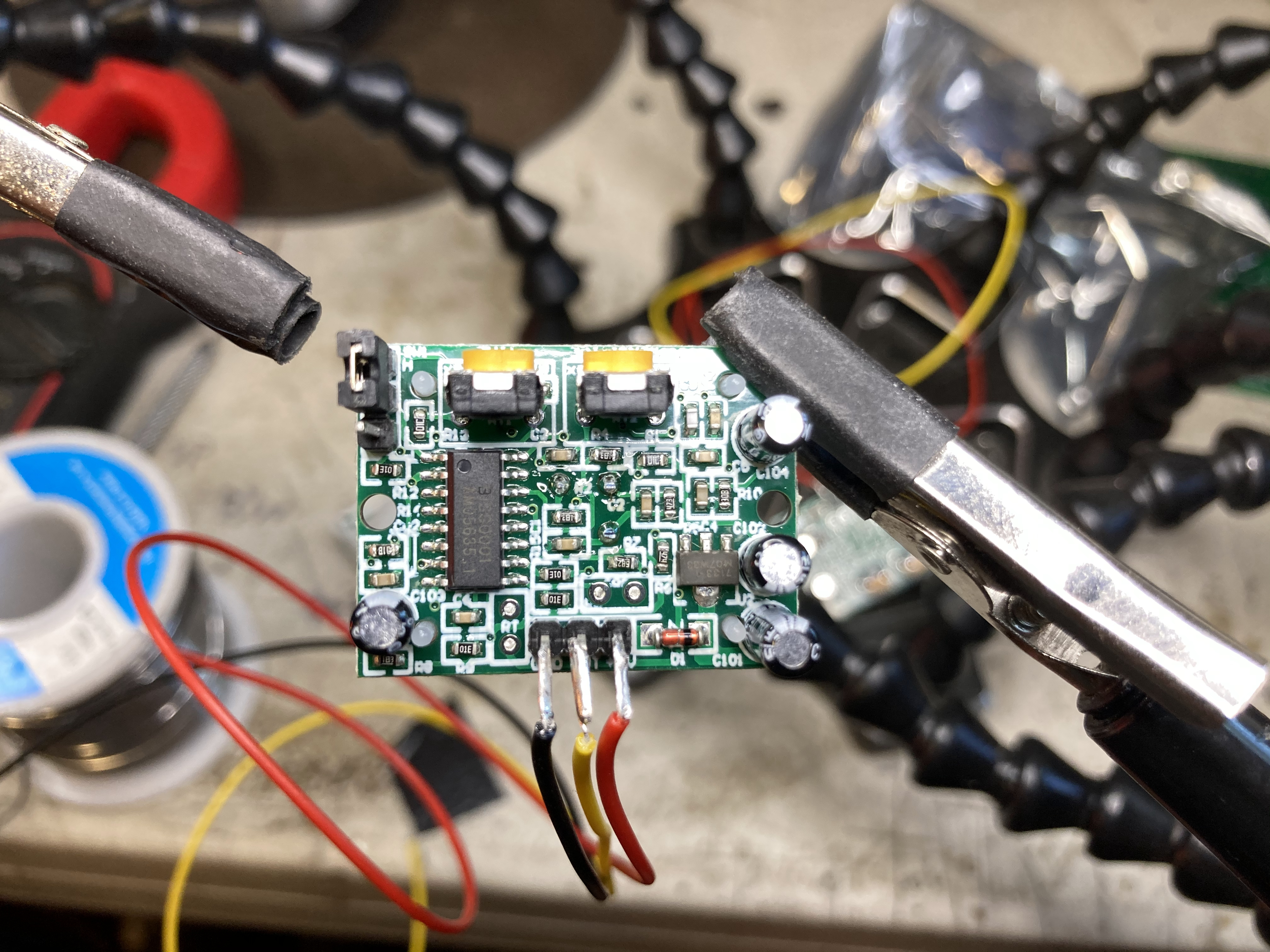Nissan Ragnar Interactive Gateways
Summer 2021
overview
An award winning project executed by freakylamps and protect awesome. Freakylamps was hired by GMR and Protect Awesome on behalf of Nissan to create interactive lighting for gateways. Runners of the Ragnar trail race run trigger exploding light and color effects as they go pass through the gates. There were 4 gates created by Scenario Custom, and we fabricated the LED channels to be embedded in the gates, as well as the entire system that triggers and powers the lights.
demo:


technical
schematics, code and design files can be found at the github repo
LED Channels
Each gateway was ~9’ tall and ~8’ across. Working with the fabricators at Scenario, the channel was fabricated to lie inside the archway. A system of LED lighting in channels up and across these archways was designed. It involved running both addressable LED strip (for dynamic animations) and analog led strips (for more pop and brightness) side by side in 4” channels 8’ long. Channels were fabricated from wood and the LEDs were diffused with white acrylic.



Electronics
The goal was to create lighting animations as the runners ran through the gateways. This involved setting up PIR sensors (human motion detector sensors) 10 feet before the gateway so we the runner could see the lighting as they went through the gate. There were 4 gates and 4 PIR sensors. The first sensor started the animation, brought the lights up, and began playback of an audio track. Here is a diagram of a typical site deployment:

PIR Sensor
The PIR sensor had to be modified so that it could be triggered quickly. Out of the box there is about a 30 second wait time between triggers. This was unacceptable and the hardware was modified to trigger faster. This PIR uses a BISS0001 chip. As noted on the datasheet, changing R10 and R9 can change the Tx (time of pulse) and Ti (time that trigger is inhibited). I did some experimenting and found a sweet spot that would still sometimes give a double trigger, but was more responsive than the factory settings. With a little software filtering in TouchDesigner, it worked well.

If you happen to need to mount the standard PIR sensor in something, I created a laser cut file to mount it inside of an enclosure, although it could be modified to be mounted in anything.
Satellites
Since the system was being deployed outside in rugged
terrain, we had to modularize it and make it swappable and
robust. The system consisted of 5 Pelican Cases, 4
“satellite” cases, and 1 “computer world” case.
The Satellite cases had power supplies, DMX decoder, and
pixel controller, and connectors for everything to interface
with it.



Computer World
An Intel Nuc running TouchDesigner ran the show. There was a microcontroller taking in the PIR sensor readings and feeding them to TouchDesigner. TouchDesigner was sending out audio, wired and wireless DMX, and pixel lighting data via a network. We created a rack system for the computer and many peripherals for the system.


Behind the Scenes
Below are some shots from the fabrication and test week in August 2021






the team
The team consisted of many fantastic hardworking
people:
Chris
Ahnberg - touch designer programmer
Eddie
Farr - programmer and fabricator
Aaron Artrip -
fabricator
Jane Foley -
fabricator
Parks Miller - fabricator
Aldo - fabricator
Chris Chambers - fabricator